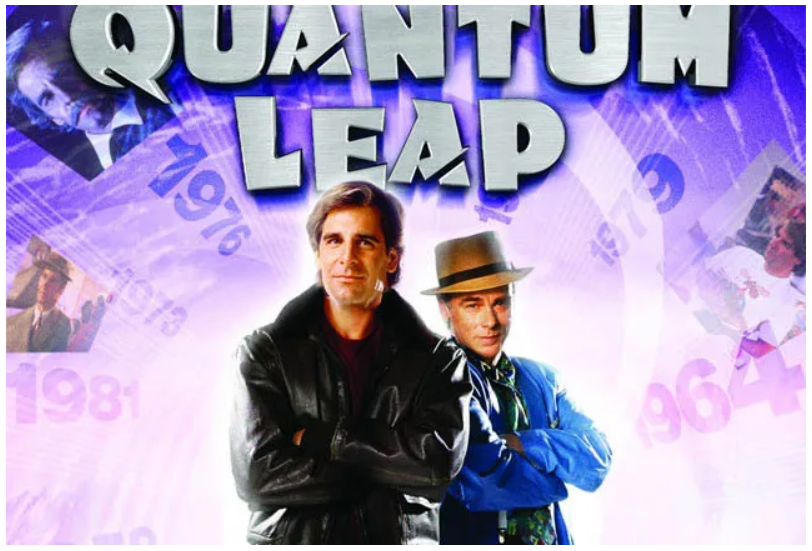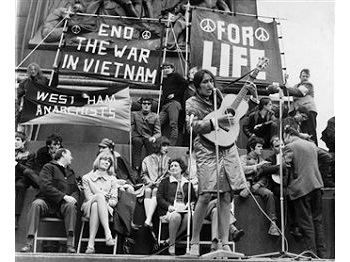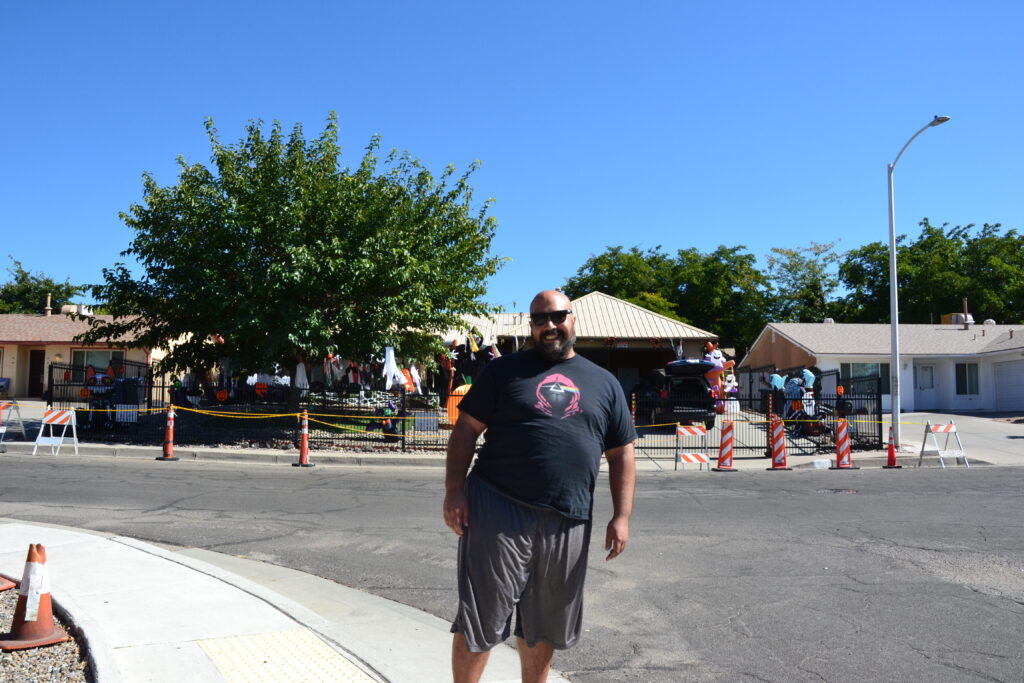“All of this has happened before, and it will all happen again.”
– Narrator, Peter Pan
“All of this has happened before. All of this will happen again.”
– Number Six, Battlestar Galactica
As video essayist Lindsay Ellis reminds us, “the past is a mirror.” From major religions,[1] to social theory,[2] to marketing,[3] we can see examples of time unfolding in a cyclical way, which can be comforting or disturbing, depending on your perspective. Broadly speaking, we observe cycles of growth and advancement, followed by disorder and collapse, followed by the growth and advancement of something responding to the aspects of the prior collapse. These pendulum swings can happen over centuries with empires, generations with family dynamics, or even presidential administrations with policies.
On a slightly lighter note, when it comes to creative media, we can see those cycles most places, often fueled by nostalgia, or at least something akin to it. In our popular culture, the cycle tends to run on about a 30-year timeframe, with new media including homages to past music, stories, and cultural mindsets. But what’s more interesting than the fact that the cycle exists is why the previous era is being referenced and how it’s being used by the creator/storyteller. Depending on the creator’s point, the references could be used as a means of idealizing the past and providing a source of escapism, or, framed differently, they could serve as a critique and illustrate how we might improve upon our previous actions.[4]
Wheel of Time
Certainly, from a business standpoint, it’s a pretty safe financial bet to run the same playbook that has worked in the past and capitalize on escapist nostalgia. Hollywood has recently given us reboots or revivals related to early ‘90s favorites such as Jurassic Park, Hocus Pocus, and Batman (OK, that was ’89), and that trend is following on the heels of extreme, if not gratuitous, ‘80s nostalgia in the last decade, exemplified most notably in 2016’s Stranger Things. Looking further back, we see this pattern repeat itself with plenty of ‘60s nostalgia in the ‘90s (e.g. Austin Powers, Forrest Gump), preceded by ‘50s nostalgia in the ‘80s (e.g. Back to the Future, Happy Days).

Image credit: [5]
Of course, internet research on the subject is strewn with strong, conflicting opinions along the lines of “Dazed and Confused came out in the ‘90s, but it’s about the ‘70s, so your whole argument is invalid,” which I saw on Reddit. Based on things I’ve read on this subject, the “nostalgia pendulum,” as it’s sometimes called, can span a much broader range, from about 25 to 40 years; the 30-year mark is easy shorthand for what’s happening when we as a culture are ready for retro pop culture to go from dusty to chic. [6]
And if you’re focusing on the fact that The Matrix Resurrections was released a mere 22 years after The Matrix, you’re missing the point. Generation demarcation is not cut-and-dry, which I completely understand as a member of the “Oregon Trail Generation,” stuck between Gen-Xers and Millennials. [7] The driving force behind the nostalgia cycle is the idea that kids who grew up consuming certain cultural content become adults and then begin to shape culture themselves by creating and/or consuming related content. Therefore, it makes sense that that content would be heavily influenced by things that were significant during earlier, more impressionable years.
But the word that continues to stick out to me in that description above is “shape”: it is the fact that we now have agency. We are no longer passive consumers of culture and society but now have the ability – and responsibility – to make decisions that will shape our world… and the choices we make will all be influenced by events and ideas that made up our worlds when we were younger. We’ll come back to that weighty concept later, but first I’ll share a little bit of background on my own 30-year nostalgia cycle and how it manifested itself this past fall.
Flower Child
As a kid, my love of science was probably only surpassed by my love of science fiction. The Discovery Channel and the SciFi Channel were on constantly when I was watching TV, and (while Star Trek: The Next Generation was probably my first real sci-fi love) I was obsessed with Quantum Leap. [8] In my above examples of pop-culture nods to previous eras, two main characters – Austin Powers and Marty McFly – experienced a displacement in time, and that’s exactly what happened on Quantum Leap… on a weekly basis. Dr. Sam Beckett’s time travel was (almost exclusively) contained to his own lifetime, which began in 1953 – that meant a lot of opportunity to explore the ‘50s and ‘60s.

Image credit: [10]
1960s nostalgia was understandably prevalent in the ‘90s, with TV shows of the time on Nick at Nite, music of the time on the oldies radio station, and modern pop culture referencing the ’60s in TV and movies. Forrest Gump in particular served as a highlight reel of that iconic decade. All of those things worked together to cement my fascination with the ’60s, but one thing that really stood out in my memory on further consideration was an episode of Quantum Leap called “Nuclear Family.” This episode aired in 1991 and was set on October 26, 1962, during the Cuban Missile Crisis. It featured fallout shelters, bomb drills, and cartoon character Bert the Turtle. [11] I was only in elementary school when I saw the episode, but I became consumed with the concept of nuclear war – to the point that I made a fallout shelter sign for my bedroom door.
It wasn’t that I wanted to live through the terror of nuclear devastation, and I don’t think Quantum Leap romanticized anything about it, but there was something incredibly compelling when it came to thinking about what life must have been like during such a tumultuous time, rife with social shifts and revolution, all with an existential threat looming constantly in the background of daily life. (Sound familiar?) I was really fixated on the ’60s by middle school, wearing my mom’s old clothes and listening to my dad’s old records. I also became an advocate for peace… and wished I had lived in the ’60s so I could be a hippie and protest the war.
There is something to be said for the catharsis of drama, even if (especially if?) it’s a dramatized version of real history, to help us deal with difficult emotions. Romanticized stories of difficult times can give comfort through the frame of “we got through it,” even if the reality was more like “some of us got through it.” One thing that struck me when revisiting “Nuclear Family” for this post was that two separate characters in the episode talked about past trauma: one lived through the Dust Bowl in ‘35, and one lived through the Holocaust. Both of those characters’ responses to the threat of nuclear war in ‘62 was shaped by their previous brushes with death and devastation about 30 years prior.
Full Circle
Around the same time I was putting Beatles posters on my bedroom walls, I remember learning about particle physics in science class and thinking that’s what I wanted to do with my life. As I discovered more about the nature of atomic energy, I was interested in what the bomb signified from a technological standpoint but also in the context of humanity becoming advanced enough to destroy ourselves. It wasn’t long after that that I began exploring eastern religion, particularly Hinduism, and trying to adopt concepts like ahimsa, or non-injury, toward all living things (which aligned with my hippie-conservationist nature). Looking back on the ‘90s, I now see that time as really setting the stage for who I am today. I don’t know if I’d go so far as to say it was a time of awakening for me (yet), but it is clear that a lot of foundational pieces were moving into place: intellectually, spiritually, and culturally.

And that is why ’90s nostalgia – or at least my own brand of it – all came rushing back as if from a fire hose this past October. The October 14, 2023 annular eclipse had been on my calendar for several years, and having traveled abroad for a total solar eclipse before, I was not going to miss my chance to see a full “ring of fire” eclipse in my own country. (By the way, the first partial eclipse I ever saw was an annular eclipse… in 1994.) What was originally going to be just a long weekend to see the eclipse and come right home turned into an intense, two-week science field trip across four states, covering 3,000 miles and a whole lot of geology, biology, astronomy, physics, engineering, and ecology – not to mention the resulting conversations about culture, psychology, philosophy, and religion I had with my husband during many hours behind the wheel.
Since I was dragging Christian along for a trip I had largely planned myself, and since it was going to involve at least one, maybe two, cold and uncomfortable overnights in our tiny rental Prius, he was allowed to veto that which he really could not abide. Therefore, I am sorry to say that the one place we did not visit, which has been on my must-visit list since the ’90s, was Roswell. For that reason, this trip had very little science fiction and nothing about alien autopsies – but if that was the worst aspect of this trip (and it was), I would survive. And I more than survived – it was the trip of a lifetime, as I will share in more detail over the next few weeks, starting with that enigmatic topic I first encountered on Quantum Leap: the bomb.
Thanks for coming along on this journey!
Keep Reading About ’90s Nostalgia –>
[1] https://en.wikipedia.org/wiki/Wheel_of_time
[2] https://en.wikipedia.org/wiki/Social_cycle_theory
[3] https://www.builtbybright.com/blog/the-30-year-cycle-why-were-obsessed-with-marketing-nostalgia
[4] https://www.youtube.com/watch?v=Radg-Kn0jLs
[5] https://medium.com/@lucasgallagher/why-the-time-is-right-for-a-quantum-leap-revival-414ec18273bd
[7] https://mashable.com/archive/oregon-trail-generation
[8] https://www.imdb.com/title/tt0096684/
[9] https://www.youtube.com/watch?v=ehbgAGlrVKE
[10] https://peacehistory-usfp.org/protest-music-vietnam-war/
[11] https://www.youtube.com/watch?v=IKqXu-5jw60
[12] https://en.wikipedia.org/wiki/Semi-Charmed_Life
[13] https://www.imdb.com/title/tt0903747/
1 Comment
Ian · January 8, 2024 at 9:34 am
I suppose, then, we are all Quantum Leap. Do you not have a time machine yet?